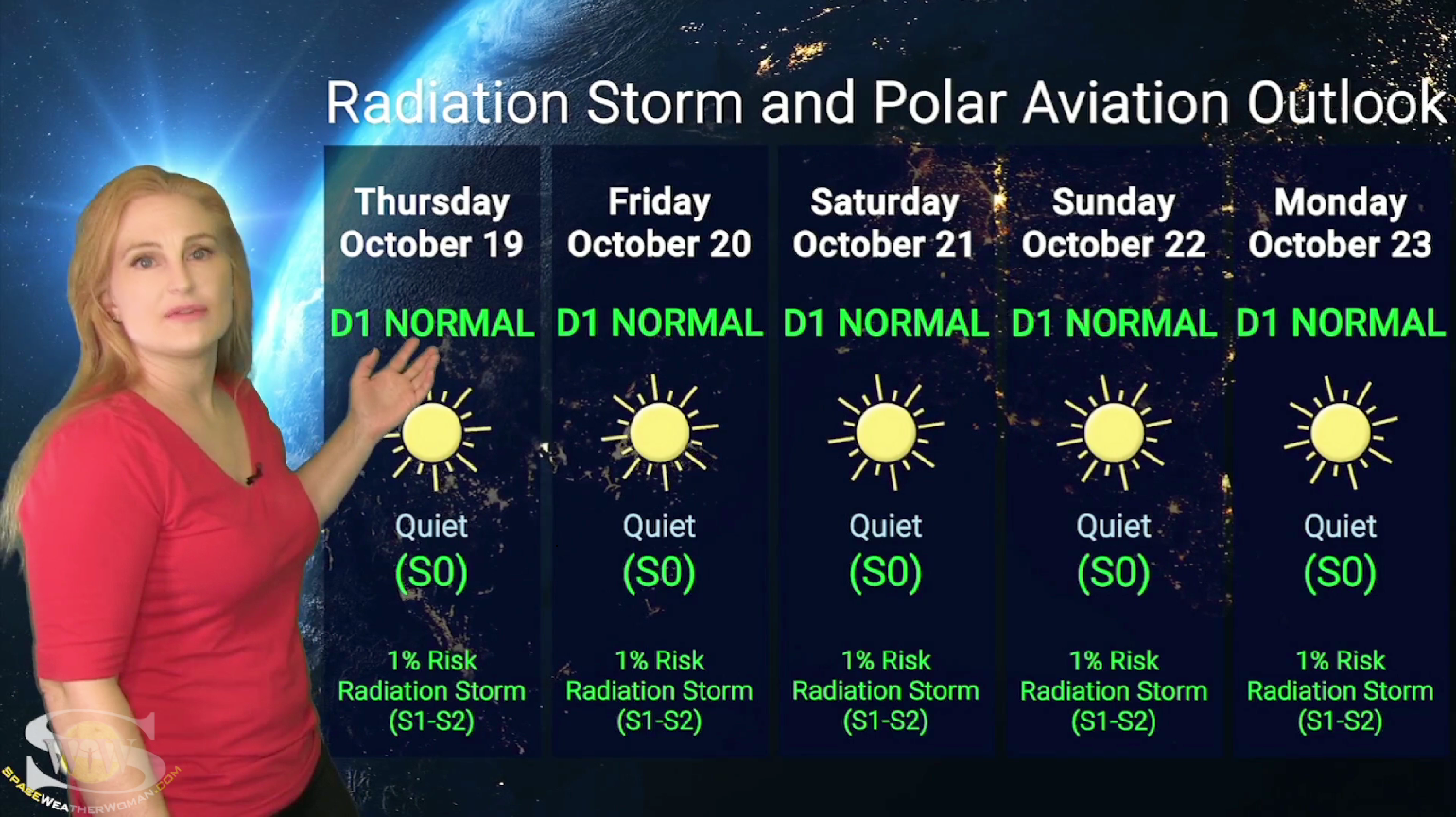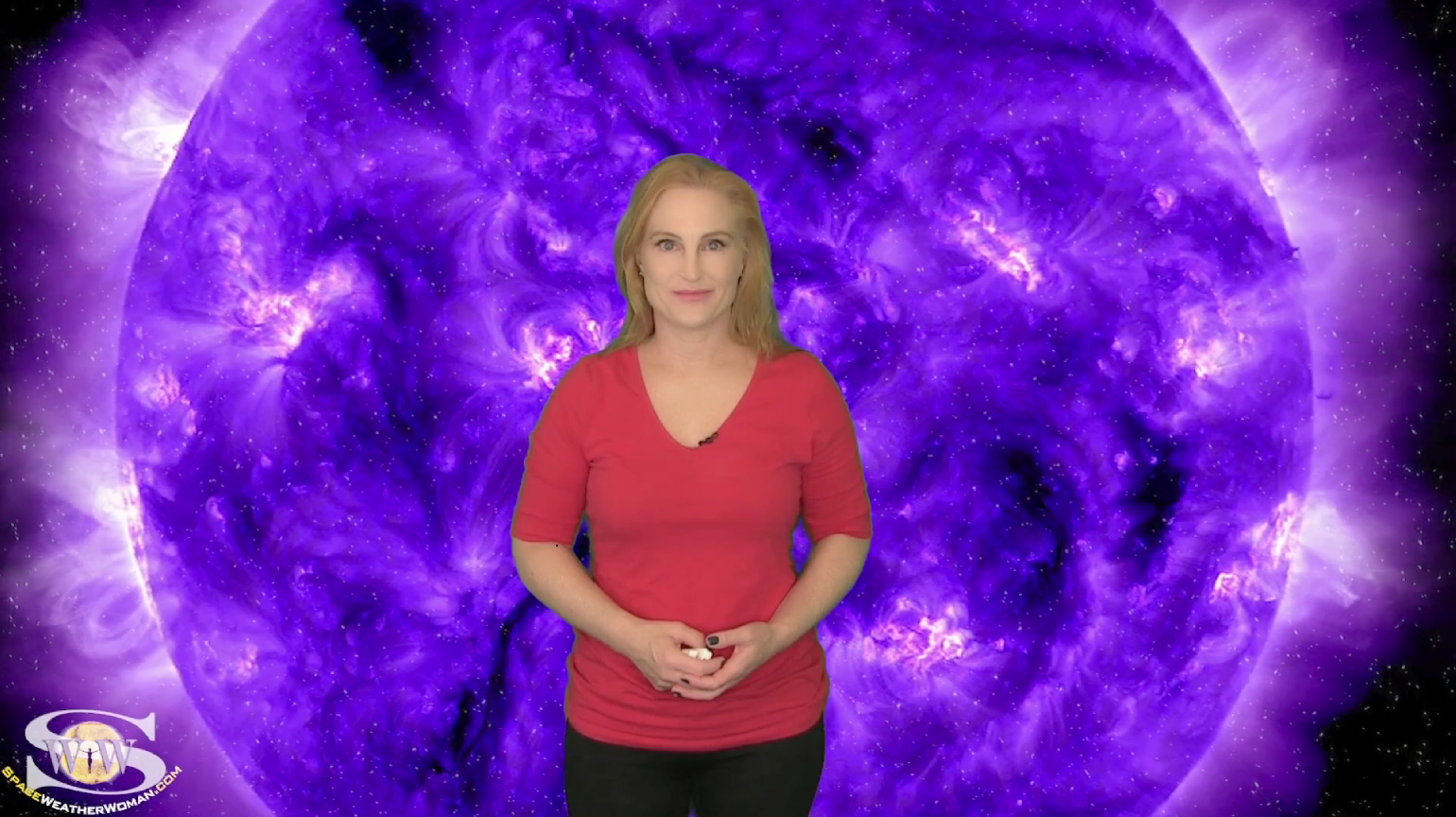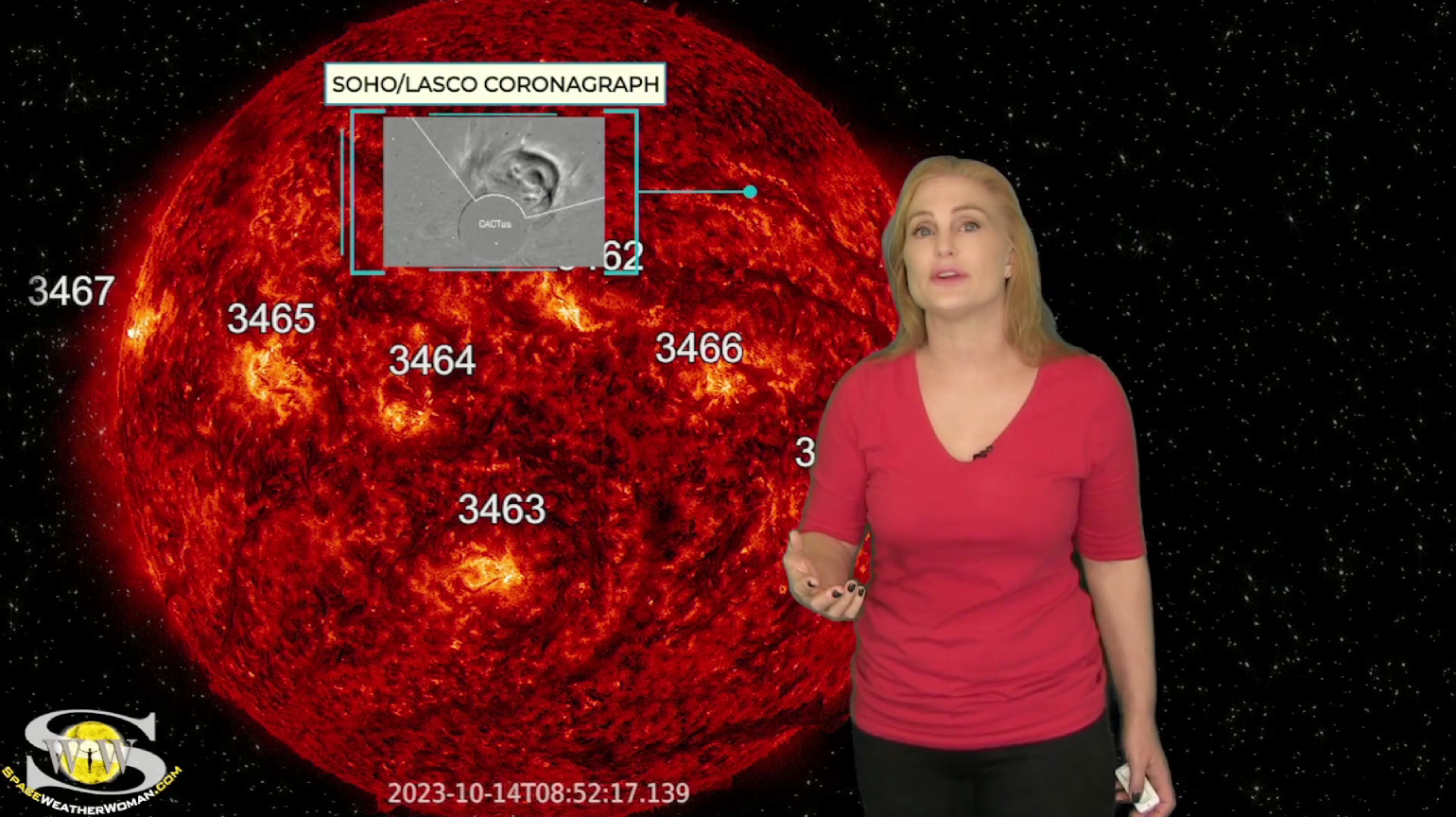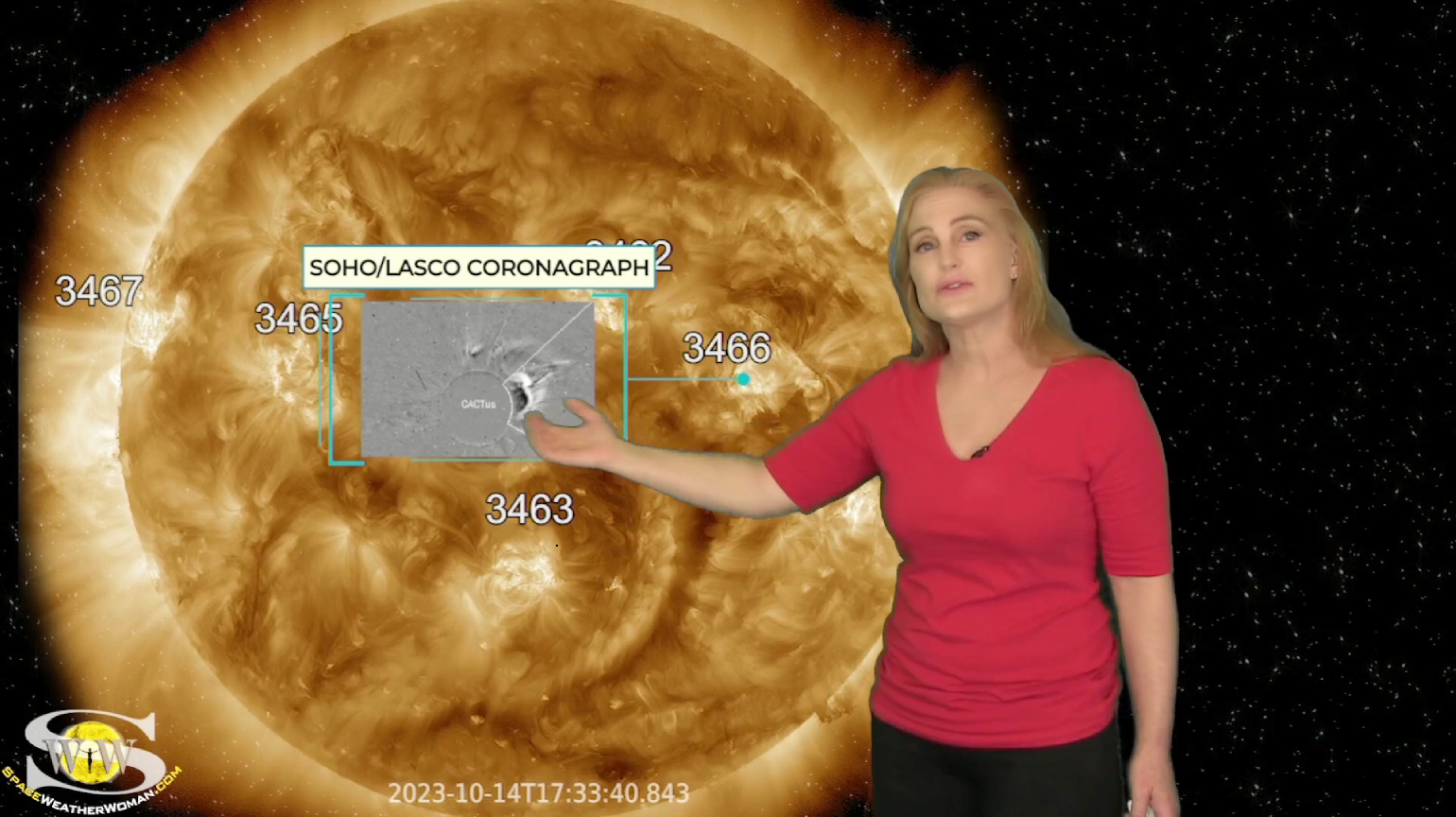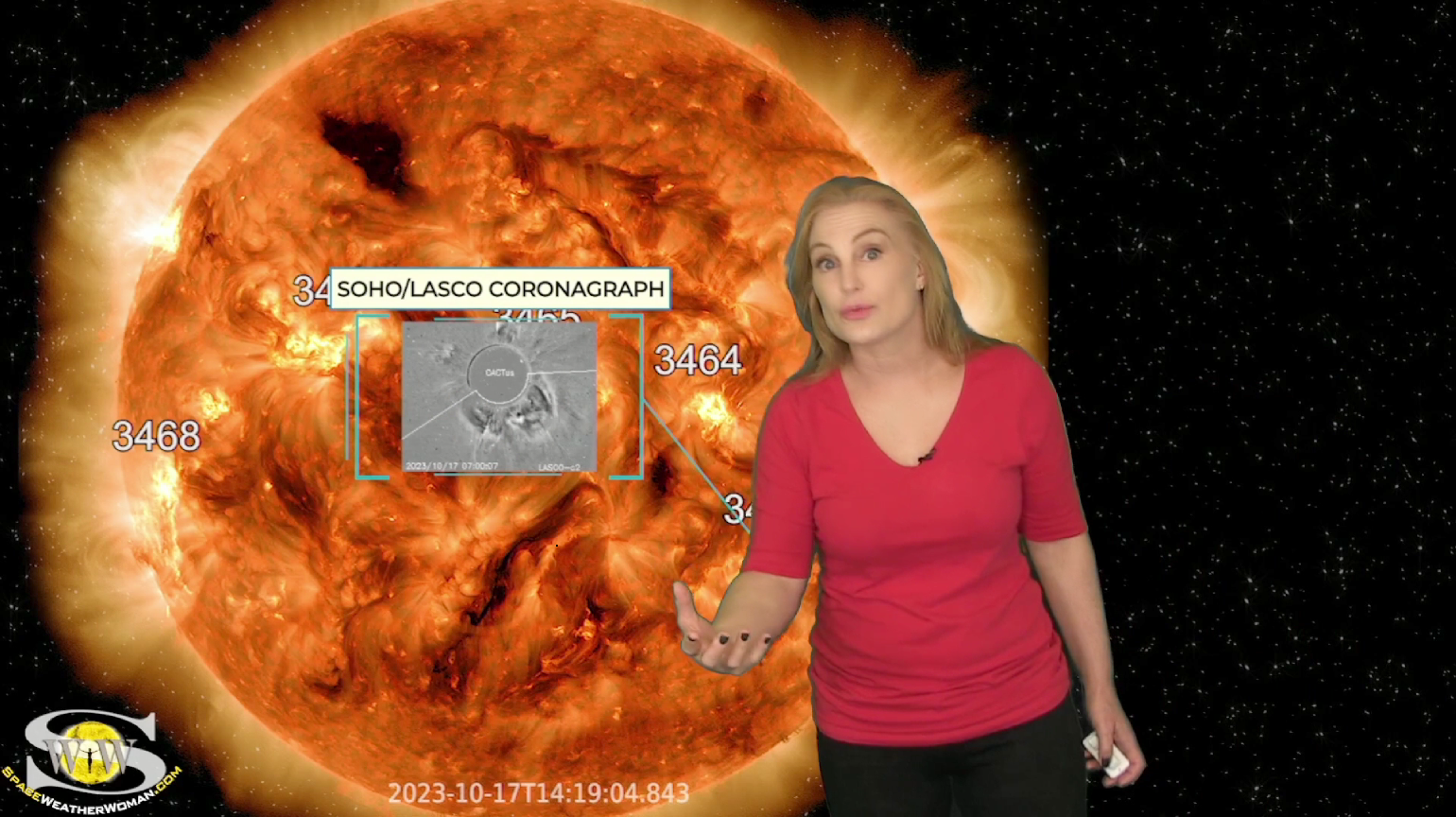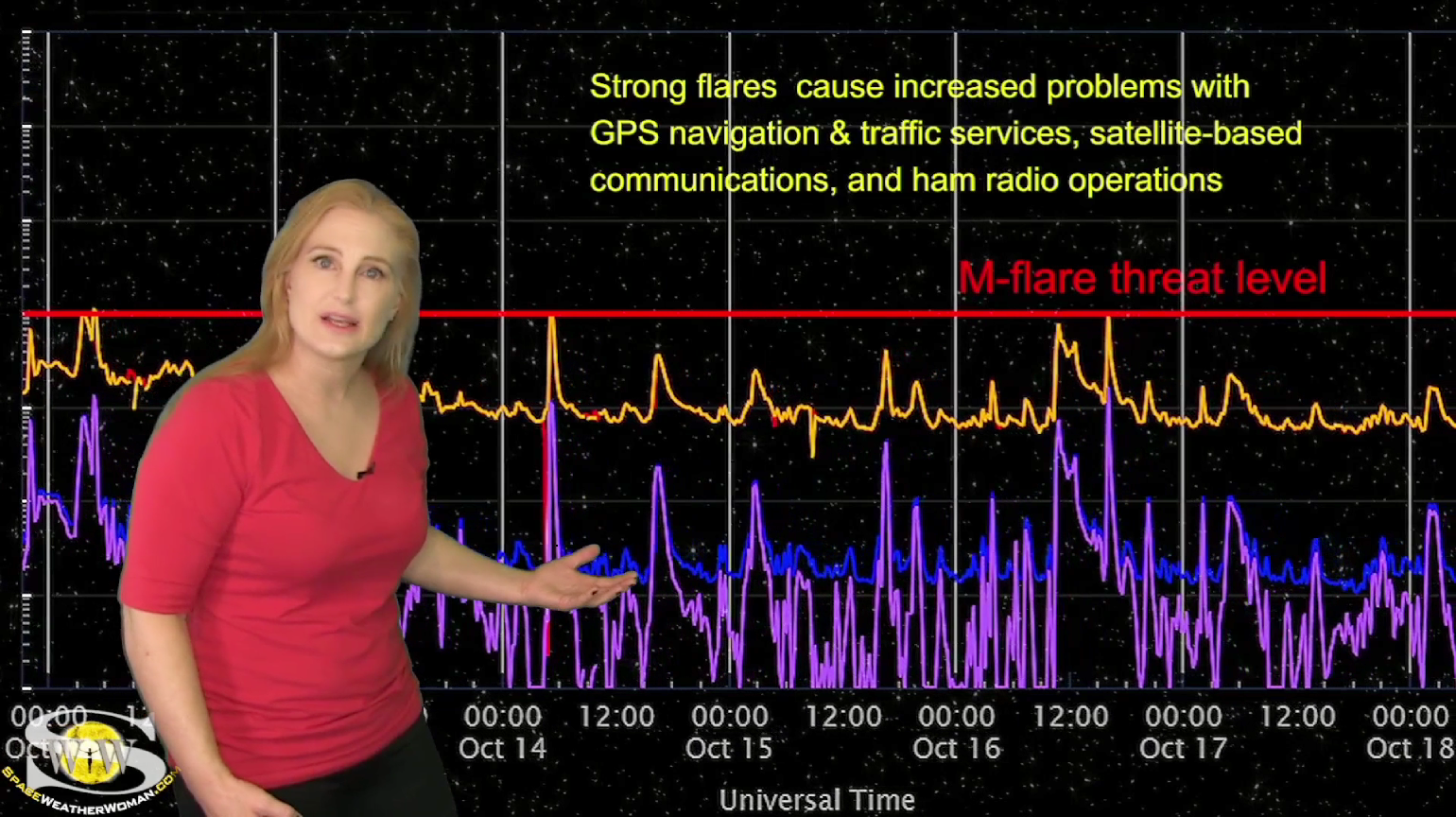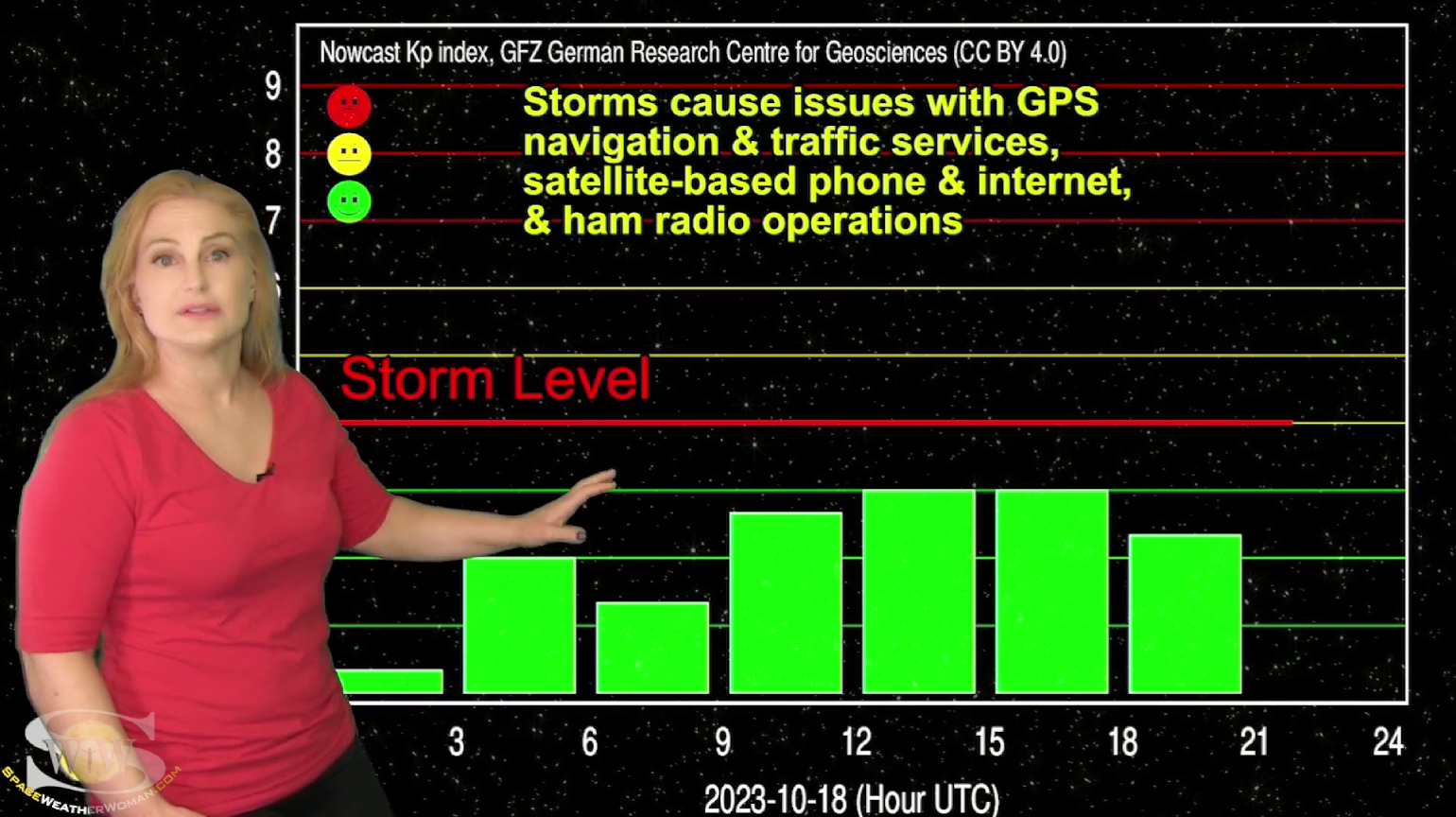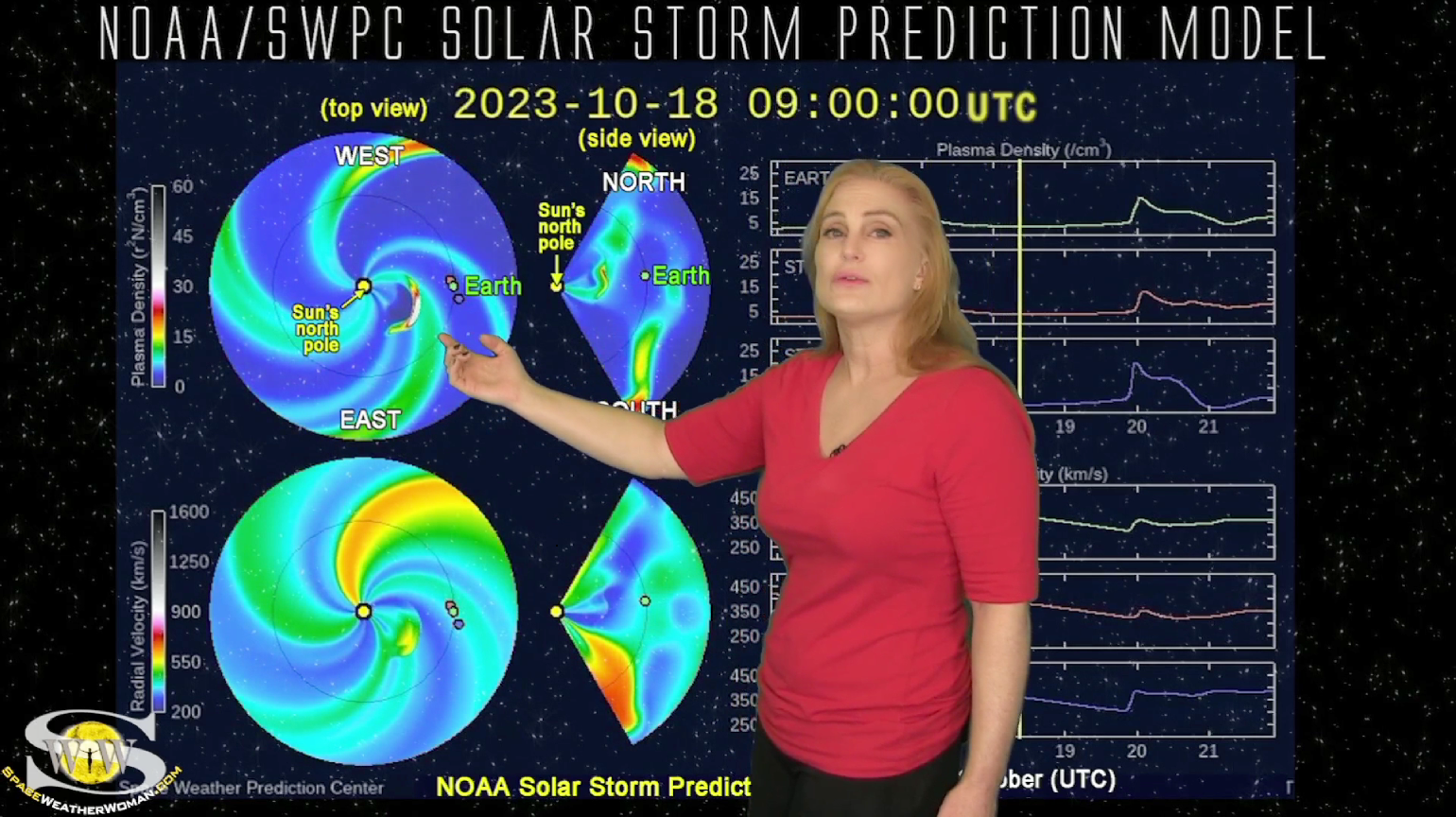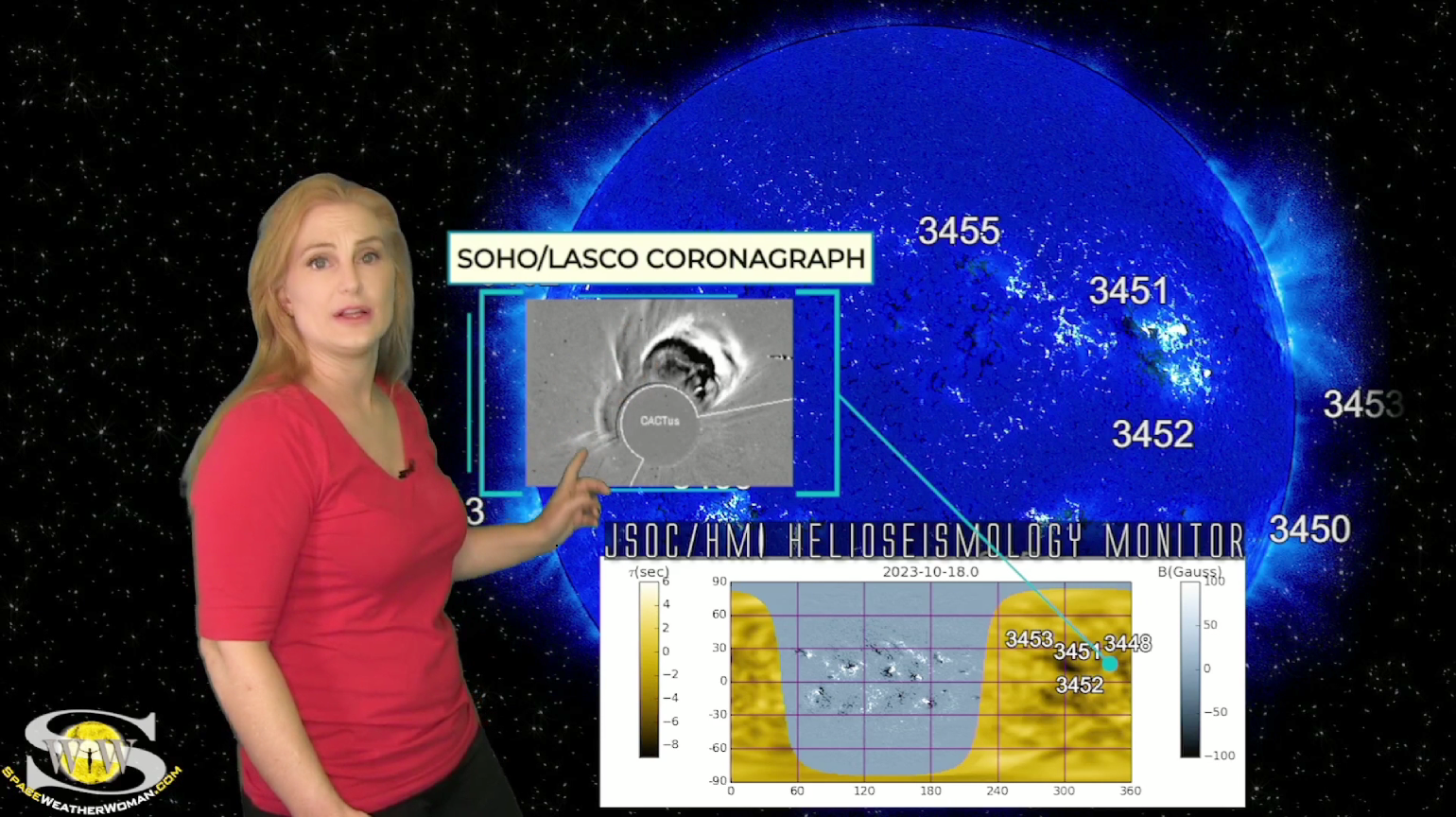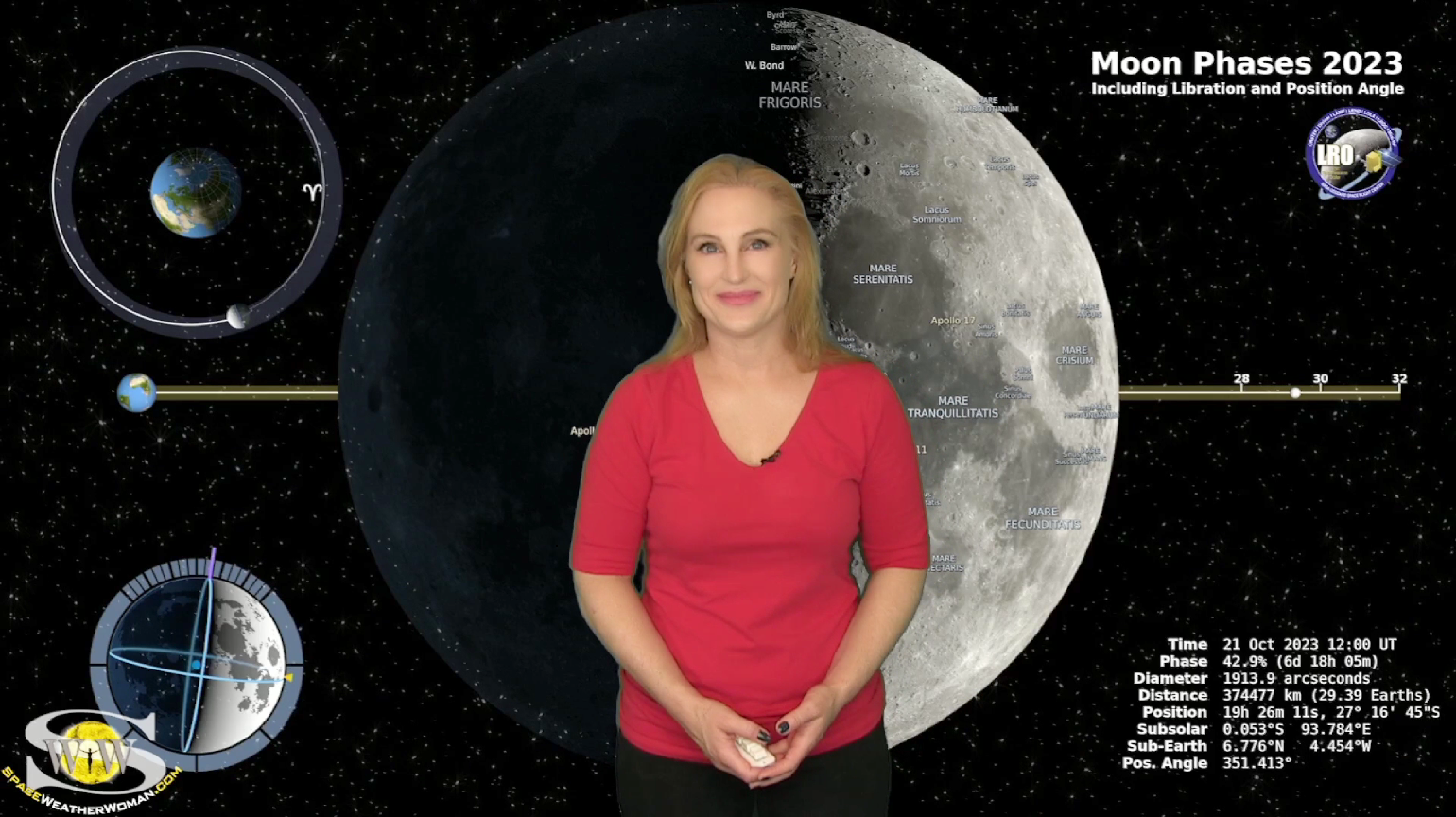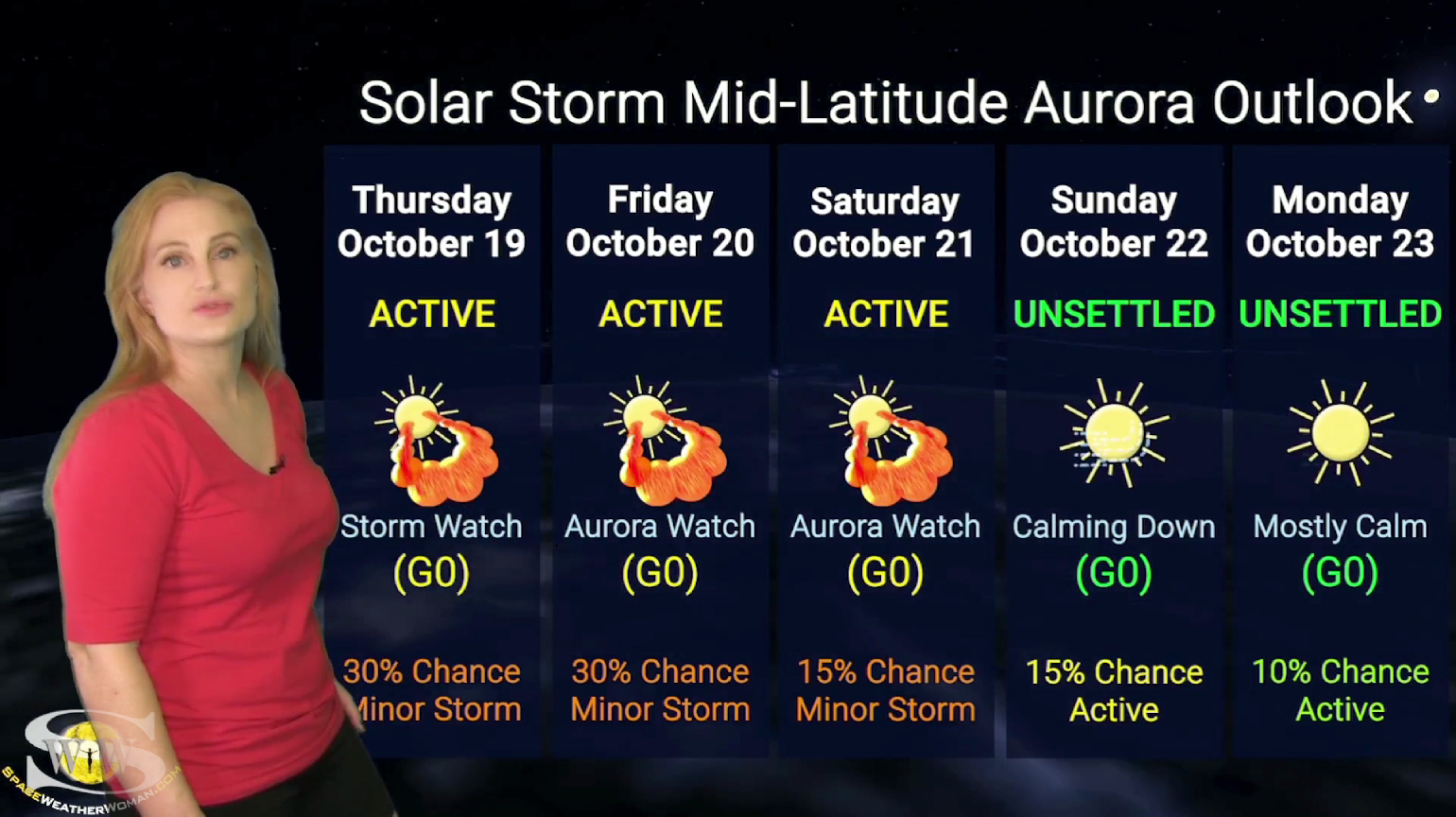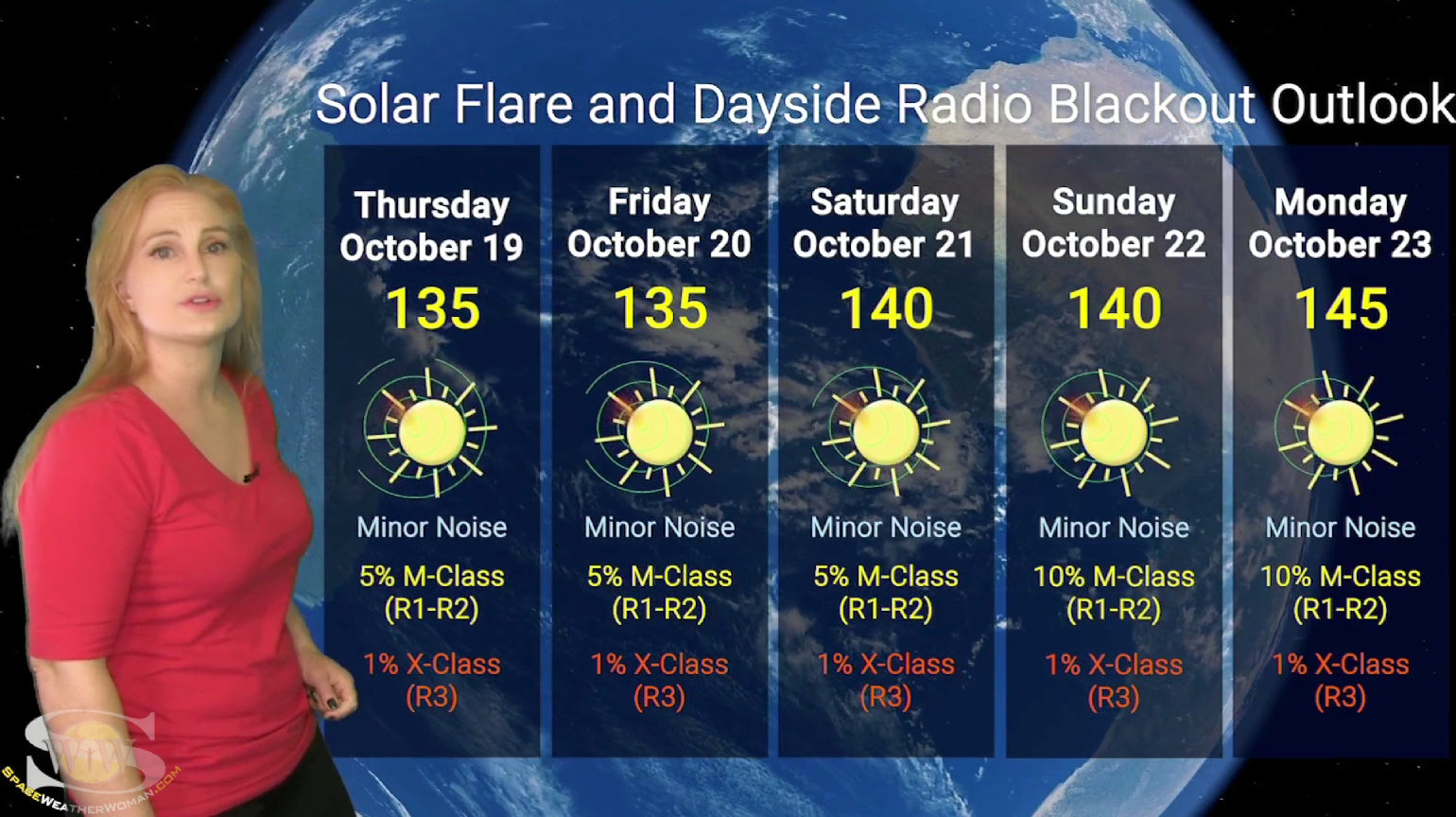Our Sun remains active, launching no less than four solar storms in our general direction, but most of these are wispy and will have a soft landing at Earth. At least one of these storms is already impacting Earth, bringing aurora to high latitudes. However, aurora photographers at mid-latitudes will likely have to wait until October 20 when a larger and faster-moving storm is expected to hit. Solar flare activity has also calmed down this week and the risk of radio blackouts has dropped quite a bit. Amateur radio operators should enjoy decent radio propagation on the dayside of Earth, without too much noise. These conditions will likely continue over the next few days before some bigger regions on the Sun’s farside rotate into view. GPS users will also notice improved reception on the dayside of Earth but will need to remain vigilant near dawn and dusk and also near aurora on earth’s nightside. Learn the details of the coming solar storms, watch the big farside blast from regions not yet in Earth-view, and see what else our Sun has in store this week!
Podcast: Play in new window | Download (Duration: 14:25 — 19.8MB)
Subscribe: Apple Podcasts | Spotify | RSS

